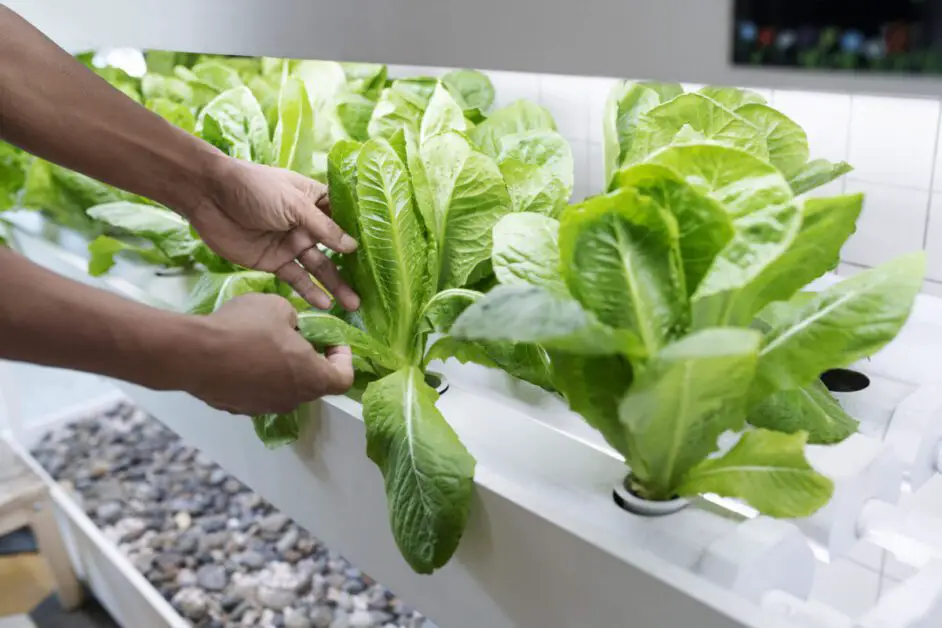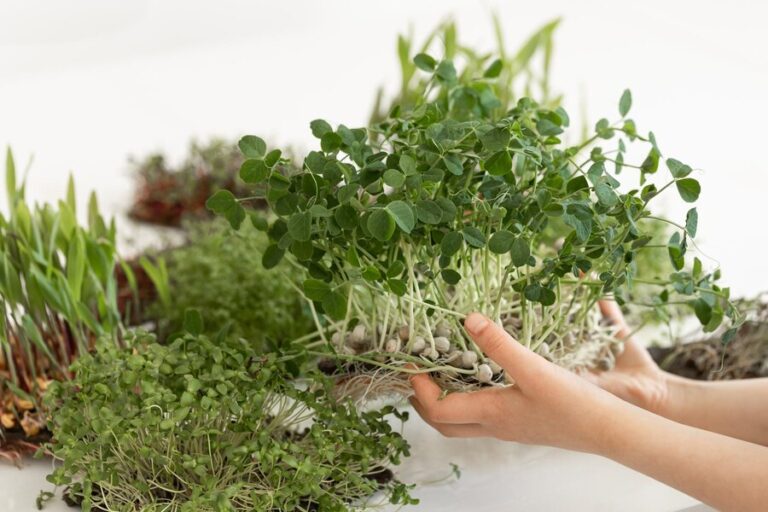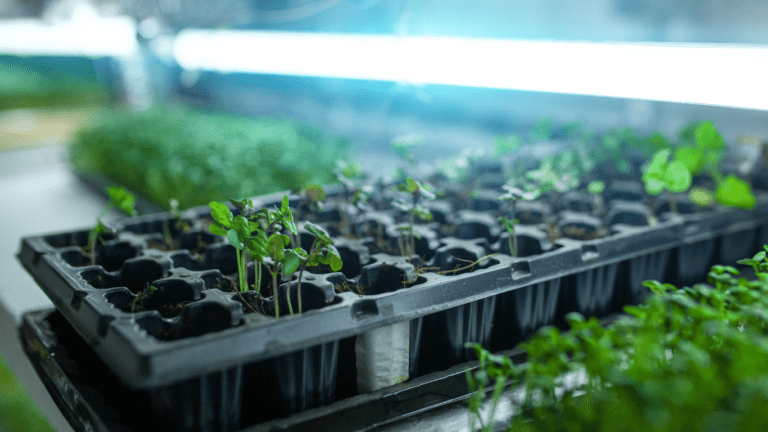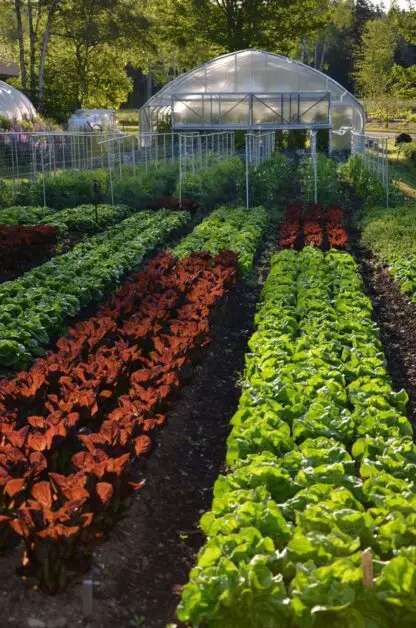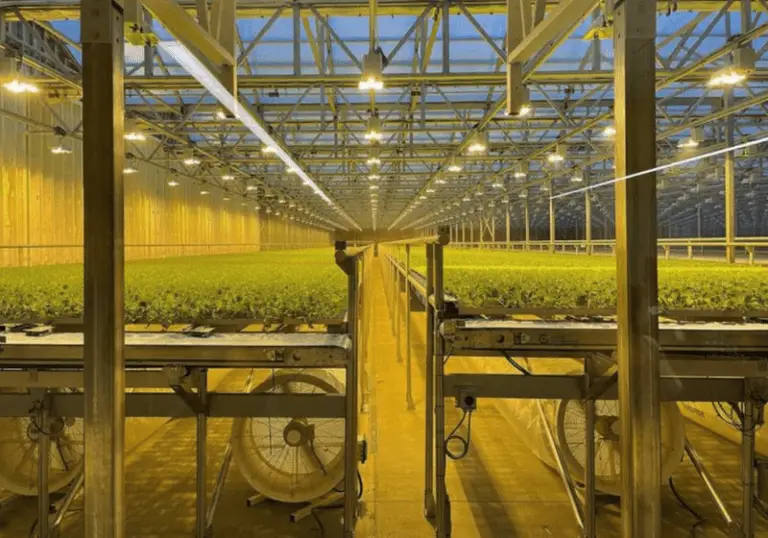How to Keep Your Hydroponic Plants Cool and Happy with a Water Chiller
Table of Contents
Understanding the Importance of Temperature Control in Hydroponics
Temperature control is a crucial element in hydroponics, as it directly affects the health and growth of your plants. Maintaining the optimal temperature range is essential for maximizing their productivity and ensuring their overall well-being. Different types of plants require specific temperature conditions, and even slight deviations can result in poor yields or even plant loss.
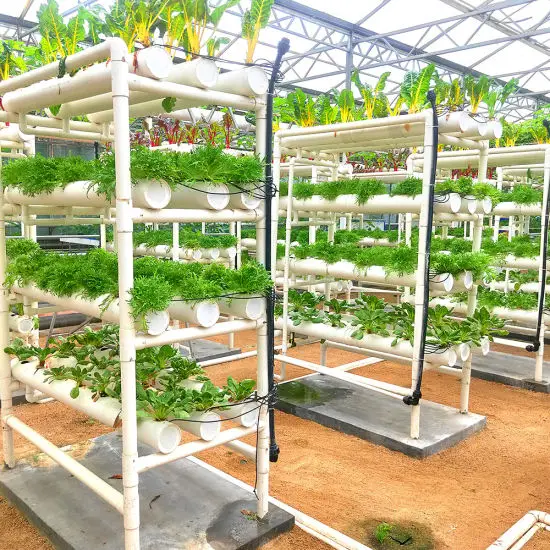
One of the main reasons temperature controls is so important in hydroponics is that it directly affects the physiological processes of plants. For example, high temperatures can lead to excessive transpiration, causing plants to lose water rapidly and potentially become dehydrated. On the other hand, low temperatures can slow down the metabolic activity of plants, causing growth rates to decrease. By closely monitoring and controlling the temperature, you can create an ideal environment that supports optimal plant development and allows them to thrive.
The Role of Water Chillers in Maintaining Optimal Plant Health
Water chillers play a crucial role in maintaining optimal plant health in hydroponics systems. By controlling and regulating the temperature of the nutrient solution, water chillers ensure that plants are provided with the ideal growing conditions. The ability to maintain a consistent and precise temperature range is essential for the overall success of a hydroponic setup.

One of the primary benefits of using water chillers is that they prevent fluctuations in the nutrient solution temperature. Many hydroponic plants thrive within a specific temperature range, and any deviations from this range can have detrimental effects on their growth and development. Water chillers help to mitigate the risk of overheating or undercooling the nutrient solution, thus keeping the plants comfortable and stress-free. Additionally, maintaining a stable temperature range enables plants to efficiently absorb nutrients, leading to improved overall plant health and productivity.
Aside from temperature control, water chillers provide additional benefits to hydroponic systems. These units also help to inhibit the growth of harmful bacteria, algae, and pathogens that can negatively impact plant health. By chilling the water, the growth rate of these undesirable organisms is significantly reduced, reducing the risk of disease and ensuring a clean and healthy growing environment for plants. Furthermore, water chillers can facilitate the dissolution and availability of oxygen in the water, which is essential for root respiration and nutrient absorption. This improved oxygenation can contribute to better plant growth and vigor.
In conclusion, water chillers have a vital role in maintaining optimal plant health in hydroponics systems. By controlling the nutrient solution temperature, they provide a stable and comfortable environment for plants, improving nutrient absorption and overall plant productivity. Additionally, water chillers help prevent the growth of harmful microorganisms and enhance oxygenation, further promoting plant growth and well-being. Incorporating a high-quality water chiller into your hydroponic setup is a wise investment that will contribute to the success of your gardening endeavors.
Selecting the Right Water Chiller for Your Hydroponic Setup
When it comes to selecting the right water chiller for your hydroponic setup, there are several factors to consider. First and foremost, you need to determine the size of your system and the chilling capacity required. This will depend on the number of plants you have, the type of plants you are growing, and the ambient temperature in your growing environment. It’s important to choose a water chiller with the appropriate BTU (British Thermal Unit) rating to ensure efficient cooling for optimal plant health.
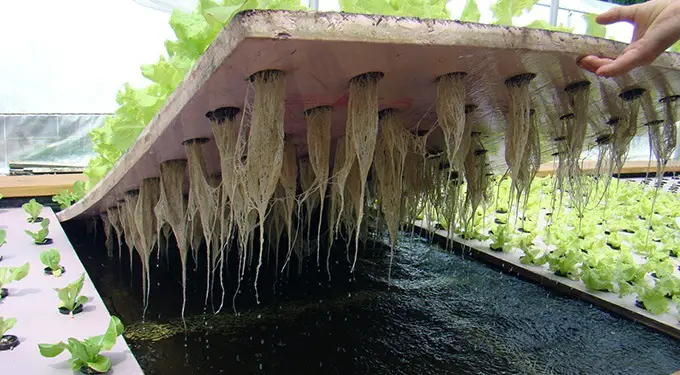
In addition to capacity, it’s crucial to consider the energy efficiency of the water chiller. Look for models that have a high Coefficient of Performance (COP) and Energy Efficiency Ratio (EER), as these indicate how effectively the chiller converts energy into cooling power. This will not only help reduce your electricity bills but also minimize the heat generated by the chiller itself, which can negatively impact the temperature of your hydroponic system. Furthermore, noise levels should be taken into account, especially if your setup is located in a residential area or if you have noise-sensitive plants. Opt for a water chiller that operates quietly to avoid any disturbances.
• Determine the size of your hydroponic system and the chilling capacity required
• Consider the number and type of plants you are growing
• Take into account the ambient temperature in your growing environment
• Choose a water chiller with an appropriate BTU rating for efficient cooling
• Look for models with a high Coefficient of Performance (COP) and Energy Efficiency Ratio (EER)
• Energy efficiency helps reduce electricity bills and minimize heat generated by the chiller itself
• Noise levels should be considered, especially in residential areas or with noise-sensitive plants
• Opt for a water chiller that operates quietly to avoid disturbances.
Proper Placement and Installation of Your Water Chiller
When it comes to the proper placement and installation of your water chiller in a hydroponic setup, there are a few key considerations to keep in mind. First and foremost, it is important to find a location that allows for optimal air circulation around the chiller. This will help dissipate heat more efficiently and prevent overheating. Additionally, it is crucial to place the chiller in an area that is easily accessible for maintenance and cleaning.

Once you have determined the ideal location, the next step is to properly install the water chiller. Start by ensuring that all necessary connections, such as water intake and outflow pipes, are securely attached. It is also important to confirm that the chiller is properly grounded to prevent any electrical hazards. Moreover, always refer to the manufacturer’s instructions for installation, as each model may have specific requirements.
By carefully considering the placement and installation of your water chiller, you can ensure its effectiveness and longevity in maintaining optimal temperature control for your hydroponic plants. This will not only lead to healthier and more vigorous plant growth but also minimize the risk of any potential issues down the line.
Determining the Ideal Temperature Range for Your Hydroponic Plants
Determining the ideal temperature range for your hydroponic plants is crucial in ensuring their optimal growth and health. Different plant species have specific temperature requirements, and meeting these requirements can greatly enhance your plants’ productivity and yield.
| Growth Stage | Ideal Temperature Range (°C) | Ideal Temperature Range (°F) |
|---|---|---|
| Germination | 20-25 | 68-77 |
| Vegetative | 20-27 | 68-81 |
| Flowering | 18-24 | 64-75 |
| Fruiting | 18-24 | 64-75 |
| Ripening/Harvest | 18-24 | 64-75 |
To establish the ideal temperature range for your hydroponic setup, it is important to consider the specific needs of the plants you are growing. Temperature can significantly affect various physiological processes, such as photosynthesis, transpiration, and nutrient absorption. Additionally, extreme temperatures can stress the plants, making them more susceptible to diseases and pests.
For most leafy greens and herbs, a temperature range of 65-75°F (18-24°C) is generally considered optimal. This range provides a comfortable environment for their growth and ensures efficient nutrient uptake. However, it is essential to note that some plants, such as tomatoes or peppers, may require slightly higher temperatures, around 70-80°F (21-27°C), to thrive. On the other hand, certain cool-season crops like lettuce or spinach might prefer slightly lower temperatures, around 55-65°F (13-18°C), to prevent bolting and ensure quality growth.
Maintaining a stable temperature within the ideal range is crucial, as fluctuations can disrupt the plants’ metabolic processes and hinder their overall development. Therefore, investing in a reliable temperature control system, such as a water chiller, is highly recommended. A water chiller allows you to maintain a consistent and precise temperature by cooling the nutrient solution that circulates through your hydroponic system.
In the next section, we will explore the role of water chillers in maintaining optimal plant health and discuss how to select the right water chiller for your hydroponic setup.
Monitoring and Adjusting Water Chiller Settings for Optimal Cooling
Proper monitoring and adjustment of water chiller settings is crucial for maintaining optimal cooling in your hydroponic system. As the temperature requirements of different plants vary, it is essential to regularly check and adjust the settings to ensure the ideal conditions are maintained.
Monitoring the temperature inside the hydroponic system is the first step in determining whether adjustments are necessary. Use a reliable thermometer to measure the water temperature accurately. Ideally, the temperature should fall within the desired range for the specific plants you are growing. If the temperature is too high or too low, it can negatively impact plant health and growth.
Once you have determined that adjustments are needed, it is important to make changes gradually. Sudden temperature fluctuations can shock the plants and cause stress. Start by making small adjustments to the chiller’s temperature settings, allowing sufficient time for the water temperature to stabilize before making further adjustments.
Regular monitoring and adjustment of water chiller settings will help you maintain optimal cooling conditions for your hydroponic plants. By providing them with the ideal temperature, you can ensure their growth and overall health are optimized. In the next section, we will explore the importance of maintaining proper water quality to complement the chilling process and enhance plant growth.
Maintaining Proper Water Quality for Effective Chilling
Maintaining proper water quality is essential for effective chilling in a hydroponic system. The quality of the water directly affects the overall health and productivity of the plants and can significantly impact the performance of your water chiller.
One of the primary factors to consider is the pH level of the water. Hydroponic plants thrive in a slightly acidic environment, with a pH range typically between 5.5 and 6.5. It is crucial to regularly monitor and adjust the pH of the water to ensure it remains within this optimal range. pH test kits or meters can be used to easily measure the acidity level, and pH adjustment solutions or additives can be used to modify the pH if necessary. Maintaining the appropriate pH level will not only support the effectiveness of your water chiller but also promote the absorption of essential nutrients by the plants.
In addition to pH, it is important to monitor the nutrient levels in the water. Hydroponic systems rely on a nutrient solution to provide the necessary elements for plant growth. However, excessive nutrient buildup can hinder the chiller’s performance and lead to nutrient imbalances and plant stress. Regularly testing the nutrient levels using an electrical conductivity (EC) meter is recommended to ensure the optimal concentration of nutrients is maintained. If the nutrient levels are too high, it may be necessary to adjust the nutrient solution or conduct periodic flushes to prevent any negative impacts on the water chiller and the plants’ overall health.
Preventing Common Problems and Troubleshooting with Water Chillers
Preventing common problems and troubleshooting with water chillers is essential for maintaining the optimal health of your hydroponic plants. One common issue that gardeners may encounter is inadequate cooling, which can lead to elevated temperatures in the nutrient solution. This can stress the plants and inhibit their growth and development. To prevent this problem, it is crucial to ensure that the water chiller is properly sized for your hydroponic system. Refer to the manufacturer’s guidelines or consult with a hydroponics expert to determine the appropriate chiller capacity for your setup. Additionally, regularly monitor the temperature of the nutrient solution and adjust the chiller settings as needed to maintain the desired temperature range. By taking these measures, you can avoid the detrimental effects of overheating and promote the optimal growth of your hydroponic plants.
Another potential issue that may arise with water chillers is the buildup of algae or other contaminants in the system. Algae growth can clog the chiller’s cooling pipes and reduce its efficiency, leading to inadequate cooling and potential damage to the chiller. To prevent this problem, it is important to implement proper water quality management practices. Regularly clean and maintain the water chiller, ensuring that all components are free from debris and buildup. Additionally, consider implementing a filtration system or using water treatment products to prevent the growth of algae and other microorganisms. By maintaining proper water quality and cleanliness, you can maximize the lifespan and performance of your water chiller, ensuring its effectiveness in maintaining optimal plant health in your hydroponic system.
Maximizing Energy Efficiency and Cost Savings with Your Water Chiller
Maximizing energy efficiency and cost savings with your water chiller is not only beneficial for your hydroponic setup but also for the environment. By implementing a few simple strategies, you can ensure that your chiller operates at its maximum efficiency while reducing energy consumption and lowering your overall costs.
One of the key factors in achieving energy efficiency is proper insulation. Insulating the pipes and storage tanks connected to your water chiller can minimize heat loss and increase its effectiveness. Additionally, regularly checking for any leaks or inefficiencies in the system can help identify areas that need improvement.
Another important aspect is maintaining the chiller’s optimal operating conditions. Regularly cleaning the chiller’s coils and filters can enhance its performance and prevent any blockages that may decrease its efficiency. Additionally, adjusting the temperature settings based on the specific needs of your hydroponic plants can minimize energy wastage.
In conclusion, by prioritizing energy efficiency and cost savings with your water chiller, you can achieve significant benefits for both your hydroponic setup and your budget. Implementing proper insulation, conducting regular maintenance, and optimizing temperature settings are crucial steps towards maximizing the chiller’s efficiency. By doing so, you will not only reduce your energy consumption, but also contribute to a sustainable and eco-friendly approach to hydroponics.
Regular Maintenance and Cleaning to Ensure Longevity of Your Chiller
Regular maintenance and cleaning are essential to ensure the longevity and optimal performance of your water chiller in a hydroponic setup. By implementing a routine maintenance schedule, you can prevent potential issues and prolong the lifespan of your equipment.
One key aspect of regular maintenance is inspecting the chiller for any signs of wear or damage. Check the hoses, connections, and electrical components for any leaks, cracks, or corrosion. Addressing these issues promptly can prevent further damage and costly repairs down the line.
Cleaning the chiller is equally important to maintain its efficiency. Over time, mineral deposits, algae, and other contaminants can accumulate in the system, hindering its cooling capacity. To clean the chiller, start by disconnecting the power and draining the water. Then, use a mild detergent or vinegar solution to scrub the internal components, ensuring all surfaces are thoroughly cleaned. Rinse the parts with clean water and reassemble the chiller.
By incorporating regular maintenance and cleaning into your hydroponic routine, you can ensure that your water chiller operates at its best, providing consistent and efficient temperature control for your plants.
Integrating Additional Cooling Methods with a Water Chiller for Enhanced Results
Integrating additional cooling methods with a water chiller is an effective way to enhance the performance of your hydroponic setup. While water chillers are highly efficient in maintaining optimal temperature conditions for your plants, adding supplementary cooling methods can further improve the overall effectiveness of your system. By combining different cooling techniques, you can create a more stable and controlled environment for your hydroponic plants to thrive.
One popular method to complement a water chiller is the use of evaporative cooling. This technique involves the evaporation of water to lower the temperature in the grow room. By placing evaporative coolers strategically around the space, you can achieve a significant reduction in heat. This method is particularly effective in dry climates where evaporation rates are higher. Additionally, using fans or ventilation systems to circulate the cool air generated by the water chiller can distribute the chilled air evenly throughout the growing area, creating a more uniform temperature distribution.
Another method to consider is the implementation of heat exchangers. These devices transfer heat energy between two different fluid streams, allowing for the removal of excess heat from the hydroponic system. By incorporating a heat exchanger into your setup, you can maximize the cooling capacity of your water chiller. This is especially beneficial if you have a large-scale hydroponic operation or if the ambient temperature in your growing area tends to fluctuate significantly. Heat exchangers can help maintain a stable and desired temperature range, ensuring the optimal growth and health of your plants.
By integrating additional cooling methods with a water chiller, you can create an environment that meets the specific requirements of your hydroponic plants. Whether it’s through evaporative cooling, ventilation systems, or heat exchangers, these supplementary techniques work in harmony with the chiller to enhance the cooling efficiency of your setup. Experimenting with different cooling methods and finding the optimal combination for your hydroponic system can lead to improved yields, healthier plants, and ultimately, greater gardening success.
Understanding the Impact of Humidity on Hydroponic Plant Health
Humidity plays a crucial role in the health and growth of hydroponic plants. Maintaining the right levels of humidity is essential for optimal plant development and preventing various issues that can affect their overall well-being. High humidity can lead to the development of fungal diseases, such as powdery mildew, while low humidity can cause water stress and hinder nutrient absorption.
When the humidity is too high, it creates a favorable environment for the growth of pathogens, as they thrive in moist conditions. Fungal diseases like powdery mildew can quickly spread and damage plants, resulting in stunted growth and lower yields. To combat this, it is important to monitor and control humidity levels within the growing area.
On the other hand, low humidity levels can lead to water stress in hydroponic plants. Without adequate moisture in the air, plants struggle to absorb the nutrients they need, which can result in nutrient deficiencies and hinder their overall growth. It is crucial to strike the right balance and provide plants with a conducive environment where they can thrive. Monitoring humidity levels, using tools such as digital hygrometers, can help ensure that conditions are optimal for plant health and growth.
Monitoring Plant Growth and Adjusting Chiller Settings as Needed.
Monitoring plant growth and adjusting chiller settings is crucial for maintaining optimal conditions in your hydroponic system. As your plants grow and develop, their temperature requirements may change, and it is important to stay vigilant in order to provide them with the ideal environment for growth.
Regular monitoring involves keeping a close eye on the temperature of the nutrient solution and the ambient temperature in your growing area. This can be achieved through the use of thermometers and temperature probes. It is recommended to take daily readings at different times of the day to account for any fluctuations. By observing the temperature trends, you can identify patterns and make the necessary adjustments to your chiller settings to ensure that your plants are consistently provided with the right temperature range.
Adjusting chiller settings is a delicate process that requires careful consideration. It is important to note that sudden temperature changes can stress your plants and hinder their growth. Therefore, it is advisable to make gradual adjustments over a span of a few days, closely monitoring the response of your plants. Additionally, it is crucial to maintain a consistent temperature range rather than constantly making drastic changes. Striking a balance between providing your plants with the optimal temperature and avoiding unnecessary stress will help to promote healthy growth and maximize yields in your hydroponic system.
For more details check the video below:
Why is temperature control important in hydroponics?
Temperature control is crucial in hydroponics because it directly affects plant health and growth. Maintaining the right temperature ensures optimal nutrient uptake, photosynthesis, and overall plant metabolism.
What role do water chillers play in hydroponics?
Water chillers are essential devices in hydroponics as they help maintain the ideal temperature range for plant growth. They cool the nutrient solution, ensuring it stays within the desired temperature range for maximum plant health and productivity.
How do I select the right water chiller for my hydroponic setup?
When choosing a water chiller, consider factors like the size of your hydroponic system, the number of plants, and the ambient temperature. Look for a chiller with sufficient cooling capacity to handle your specific needs.
What is the ideal temperature range for hydroponic plants?
The optimal temperature range for hydroponic plants typically falls between 65°F and 75°F (18°C and 24°C). However, different plants may have specific temperature preferences, so it’s essential to research the ideal range for the specific crops you’re growing.
How do I monitor and adjust water chiller settings for optimal cooling?
Regularly monitor the temperature of your nutrient solution using a thermometer or a temperature controller. Adjust the chiller settings accordingly to maintain the desired temperature range and ensure optimal cooling.
How can I prevent common problems and troubleshoot issues with water chillers?
To prevent common problems, regularly check for any leaks, ensure proper water flow, and clean the chiller’s filters. If you experience issues, consult the manufacturer’s manual or contact their customer support for troubleshooting assistance.
Can I integrate additional cooling methods with a water chiller?
Yes, you can integrate additional cooling methods, such as using fans or evaporative cooling, alongside a water chiller to enhance its effectiveness. This can help in areas with high ambient temperatures or in larger hydroponic setups.
How does humidity impact hydroponic plant health?
Humidity levels affect transpiration rates and nutrient uptake in hydroponic plants. Maintaining the appropriate humidity level helps prevent excessive water loss through evaporation and ensures plants receive the necessary moisture for growth.
How do I monitor plant growth and adjust chiller settings accordingly?
Regularly observe your plants for signs of stress or unusual growth patterns. If the plants show signs of heat stress, such as wilting or slowed growth, adjust the chiller settings to provide cooler nutrient solution and alleviate the stress.

Kanike Sreekanth, a prolific writer at SouthElMonteHydroponics, brings a unique blend of creativity and scientific rigor to the table. With a degree in Horticulture from a prestigious institution, Kanike’s expertise spans hydroponic farming, plant biology, and agricultural sustainability. Their passion for exploring innovative cultivation methods and promoting environmental stewardship drives them to uncover new insights in the realm of hydroponics. Kanike’s writing serves as a conduit for sharing their knowledge and inspiring others to embrace alternative farming practices for a more sustainable future.

